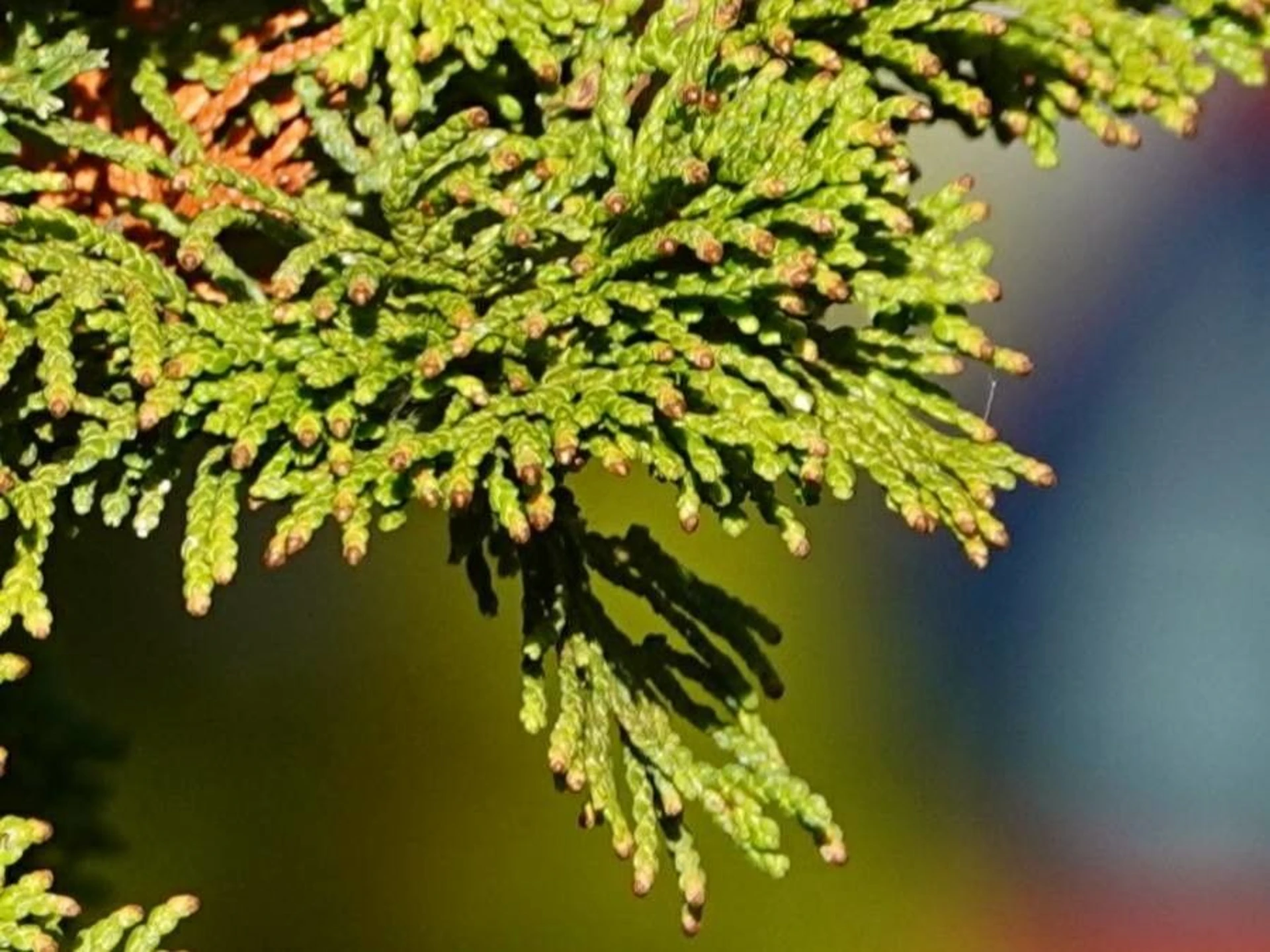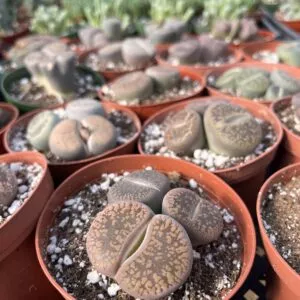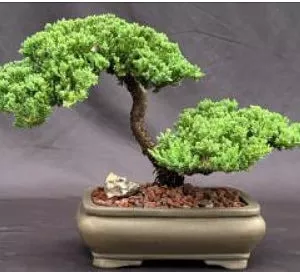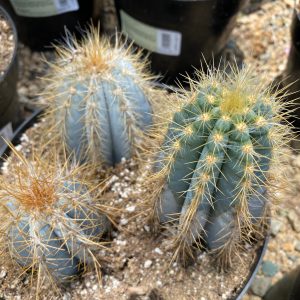No products in the cart.
Popular in the windbreak tree section, the Techny arborvitae is a dwarf clone of its parent plant American arborvitae. It’s an evergreen shrub or small tree that grows an average height of 10 to 15 feet and spreads about six to eight feet.
While the older needles drop during the fall season, Techny arborvitae trees remain green during winter, making it a highly recommended evergreen to plant in your landscape.
PLANT NAME: Thuja occidentalis ‘Techny’
Other Name: Techny arborvitae, American arborvitae, White cedar
Plant Type: Evergreen shrub/small tree
Native Areas: Techny, Illinois
Light Requirement: Full sun to partial shade
Watering: One inch of water per week
Fertilizer: Slow-release fertilizer high in nitrogen
Toxicity: Low level of toxicity
Temperature: Hardy up to -50°F (-45.56°C)
Propagation: Stem cuttings
Growth: Moderate growth rate
Soil Type: Moist, neutral to alkaline soil pH, well-drained loam soil types
More About Techny Arborvitae

One thing admirable about the Techny is its habit of growth which resembles the natural shape of a pyramid. The tree is low-branched and skirts the ground. Hence, when planted in groups, these arborvitae trees create an effective privacy screen and windbreaker with their dense foliage.
Since Techny is a dwarf variety, it doesn’t grow very tall compared to its parent plant. Nevertheless, such characteristic makes this plant a preferred specimen for hedges, mass planting, and vertical accent in many landscapes.
Techny Arborvitae Care Guide
When planted in a suited hardiness zone, Techny is considered low maintenance. Of course, newly planted arborvitaes will require more care but they become more manageable as time passes by. Below are the basic growing requirements to consider:
Soil

Good soil conditions will help establish a young Arborvitae tree. Well-drained loam soil is ideal but it will also survive in clay soils as long as it has extra moisture. Sandy soil is not much preferred because it may not hold the tree well, especially since it has a shallow root system.
Keeping enough soil moisture is very important. Putting organic mulch around the tree’s base will help conserve moisture during dry weather as well as protect the root ball when the ground freezes.
Lighting

Light conditions ranging from partial shade to full sun are acceptable to Techny. In hot summer climates, the provision of light afternoon shade will favor the plant. Completely shaded locations aren’t good spots for growing arborvitae trees, so try to avoid that.
At the minimum, four hours of full sun daily should be present to keep the Techny happy.
Watering
Because of its shallow root system, Techny loves to keep its soil moist. In the absence of rainfall, water deeply to provide an inch of water per week. You can easily achieve this by letting a soaker hose run water on top of the root zone. Do this for about 2 to 4 hours to help the roots develop extensively.
Temperature and Humidity

Techny plants can live in areas under hardiness zones 3 to 7 and it’s hardy up to -50°F (-45.56°C). The leaves will not turn bronze from cold damage. However, some branches may bend if there’s heavy snow.
Fertilizer

It’s not advisable to fertilize newly planted arborvitae trees because their roots are still young and not established. Feeding the soil will only result in fertilizer burn. Instead, we recommend that you incorporate slow-release fertilizer into the planting hole such as compost, vermicast, and the like before planting.
Once the arborvitae is established, you can feed the soil with high nitrogen fertilizer once in early Spring (growing season) to encourage the new growth of foliage.
Pruning
To prevent the splitting up of the trunk, prune the Techny up to one stem only at the bottom. Do this in the first year of the tree so when the time that when it grows, it will be sturdy enough to withstand windbreak.
An established arborvitae will also need regular pruning to keep its pyramid shape on point. You can do this in Spring to remove the overgrown branches and growth abnormalities. Beware of over-pruning because Techny doesn’t produce new growth on old wood.
You wouldn’t want to leave blank spots on your tree.
Potting
If you have limited space and would still want to plant arborvitae, that’s fine. You can use pots for growing one. However, you need to exert extra effort in frequently watering the soil to maintain sufficient moisture as well as repotting to prevent root-bound cases.
It’s best to choose a pot that’s sturdy and big enough. Ideally, the size of the container must be six times larger than the root ball of the tree. Use a soil-based sterile potting mix that’s well-amended with coarse sand, sphagnum peat moss, vermiculite, or perlite to ensure good drainage, aeration, and water retention.
Propagation
One easy way to propagate arborvitae trees is through the use of cuttings. The selection of semi-ripe cuttings is much preferred over green wood cuttings because they can store more energy and moisture. Although they take time to root, they’re more reliable and have a high chance of survival.
The process is pretty straightforward. After selecting the vigorous cuttings, separate them from the mother tree. Remove the lower leaves, and dip the bottom part to a rooting hormone. Insert the cuttings into a propagating mix.
Then, mist the soil with water to make it moist.
Cover the cuttings with a clear plastic bag to maintain high humidity. Put them somewhere partially shaded or one that receives filtered light. In about six to eight weeks, the cuttings will develop their roots. After that, you can plant arborvitae cuttings in individual pots.
-
Free Shipping$12.50Sold By: California Tropicals
In stock
Hoya Crimson Princess – 2” from California Tropicals
Rated 4.96 out of 5 based on 25 customer ratings08Sold By: California Tropicals -
$10.99Sold By: Cacti and Exotica
In stock
CactiandeExotica | Cereus Peruvianus –Peruvian Apple Cactus
Rated 4.98 out of 5 based on 59 customer ratings00Sold By: Cacti and Exotica -
Free Shipping$315.59Sold By: BONSAI WORLD LLC
Only 1 left in stock
Juniper Bonsai Tree – Trained (juniper procumbens nana)
Sold By: BONSAI WORLD LLC -
$10.00Sold By: Cacti and Exotica
In stock
Lithops
Only 10 available and it’s in 1 people’s basketRated 4.98 out of 5 based on 59 customer ratings00Sold By: Cacti and Exotica
Other Arborvitae Varieties
Emerald Green Arborvitae
The Emerald green is very much close to the appearance of Techny. It has a narrow, pyramidal shape with emerald green leaves, reaching a height of 15 feet. This plant is of Danish origin.
Golden Ball Arborvitae
The Golden ball has a rounded shape and reaches only a mature height of 3 to 5 feet. Its golden yellow leaves make it a standout in an outdoor landscape. Like the Techny and Emerald green, Godlen Ball can also function as a short hedge or privacy screen.
Little Gem Arborvitae
Little Gem follows a rounded form too, pretty much like the Golden Ball. This dwarf variety is slow-growing and requires no pruning. Its average mature height is about 3 feet.
Techny Arborvitae Common Diseases and Pests
Bagworms can be a serious problem with arborvitae trees, including Techny. Severe infestation can defoliate the tree that’s why catching them early in the season is crucial. You can usually hand-pick the bagworms from the trees. Other common pests include spider mites, mealybugs, and scales.
Fungal diseases such as leaf blight may cause spots on the leaves. It’s best to maintain good air circulation in the garden through proper spacing. Avoiding overhead watering also helps prevent such diseases.
Frequently Asked Questions
Techny and Emerald green are from the same species, Thuja occidentalis. However, they differ mainly in their foliage color. The Techny variety has dark green foliage that sheds some needles during early fall while the Emerald green has bright green foliage color that doesn’t shed.
Emerald green is also more of a slow grower compared to Techny but both trees reach a mature height of 15 feet.
Techny arborvitae can live up to a hundred years in its ideal environment. Unfavorable factors such as close planting distance and dry weather can reduce the life of the tree.
Techny is relatively smaller than other arborvitae trees. Hence, you don’t need to have a huge space to grow Techny. The tree spreads an average width of six to eight feet only.
Arborvitae is a French phrase given by early settlers to North America. It means “tree of life” because the leaves were believed to have cured scurvy disease.
Check out our offerings or arborvitae plant here.
Whether you want to buy, sell, or simply reach out to other plant enthusiasts, Plantly is the right place to be!
-
$15.00Sold By: Beauties & Beasts
In stock
Succulent- Crassula falcata- Succulent-
Rated 4.83 out of 5 based on 24 customer ratings00Sold By: Beauties & Beasts -
Free Shipping$238.59Sold By: BONSAI WORLD LLC
Only 1 left in stock
Juniper Bonsai Tree – Trained (juniper procumbens nana)
Sold By: BONSAI WORLD LLC -
$45.99Sold By: Succulent Oasis
Only 2 left in stock
Mature Cactus Plant Blue Candle Cactus
Rated 4.84 out of 5 based on 352 customer ratings00Sold By: Succulent Oasis -
$10.99 – $29.99Sold By: Succulent Oasis
In stock
Medium Kalanchoe ‘Dragonfire’. A beautifully colored succulent.
Rated 4.84 out of 5 based on 352 customer ratings01Sold By: Succulent Oasis










